
Top Ten Cryptozoology Stories of 2020
By Loren Coleman, Director, International Cryptozoology Museum

Each year, our summary of cryptozoology news shares those stories which may have caused the most stir among the media, had the greatest impact overtly or covertly in the field, or involved trends that may point to future events.
For the museum world, with active, thriving institutions in Portland, Maine; Boring, Oregon; Cherry Hill, Georgia; Willow Creek, California; Felton, California; Point Pleasant, West Virginia; around Loch Ness, Scotland; and elsewhere, cryptozoology started out the year in a good state of being.
Timing is everything. In the Northern Hemisphere, editors begin publishing their “travel recommendations” articles in the Spring. Just as the coronavirus started shutting down museums ~ including cryptozoology ones ~ Fodors Travel Guide came out on April 2, 2020, with their “15 Bizarre Museums to Add to Your Next U.S. Road Trip.”
Right there on Fodors’ list, #1 of 15 was “International Cryptozoology Museum.”
With COVID-19, it was a calmer year, so let’s start with a mainstream item that will change a specific long-term investigation now occurring in hominology.
1. Coronavirus, Vietnam Vet Deaths, and Rock Apes

An artist conception of the Nguoi Rung, the Vietnamese name for the Rock Ape.
The Year 2020 will go down in history for the pandemic, and the early death of many people. One large group of the souls we have lost are Vietnam Veterans.
By some estimates, before the COVID-19 pandemic hit in 2020, about 800 Vietnam vets were dying every day in the USA. No one can tell how much that number has increased. As of December 27, 2020, coronavirus deaths nationwide surpassed 330,000 people. The Veterans Affairs (VA) medical system — which includes both care homes and health care centers — exceeded 6,000 deaths, an increase of 650 from the past week and four times the number of deaths recorded the week prior. Those 6,192 deaths include only veterans diagnosed at VA hospitals and medical centers.
Thousands of others died in state-run homes since the pandemic began in mid-March, while 90 workers in 53 facilities have died.
The age of the veterans naturally translates into an advancing wave of deaths. The Vietnam War, also known as the Second Indochina War, and in Vietnam as the Resistance War Against America or simply the American War, was a conflict in Vietnam, Laos, and Cambodia from November 1, 1955 to the fall of Saigon on April 30, 1975. Service women and men from the conflict are growing old, dying everyday, and in the midst of the pandemic. It is part of the sad legacy of COVID-19.
We are now seeing the loss of information on the personal encounters with the Rock Apes.
In the book, Very Crazy GI – Strange but True Stories of the Vietnam War, Vietnam War veteran Kregg P. J. Jorgenson told of how he had an actual sighting of a short, red-haired, hairy, upright anthropoid, which he says soldiers in Vietnam called a “Rock Ape.” One even was said to be captured in Dak Lak Province in 1971, and in 1974 a North Vietnamese general, Hoang Minh Thao, requested an expedition to find evidence of the creatures, but it was unsuccessful.
Other soldiers, down through the years, have told of their own Vietnam War era encounters with these cryptids. Time is running out for the capture of these stories, now more than ever.

Nguoi Rung
Source: The Field Guide to Bigfoot and Other Mystery Primates
2. 2020′s Loch Ness Monster Hoax
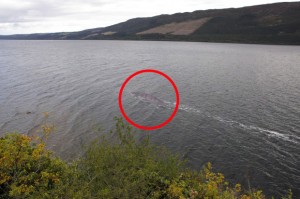
In June 2020, a man allegedly named Steve Challice, from Southampton, came forth claiming he took a photo while on holiday at Loch Ness in Scotland. He said in September 2019, he was at Castle Urquhart on the West bank of Loch Ness when he saw a ripple in the water. Then he says he took a photograph.

Challice told the media: ““In my opinion (and I’m no expert) I think it’s a large fish that got into the Loch from the sea.”
But it was something much simpler. Something we call “photoshopping.”
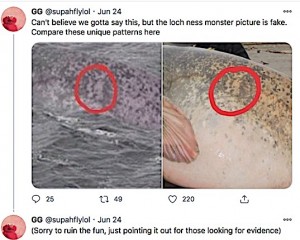
It was an entirely constructed 2020 hoax.

So much for the Loch Ness Catfish.
3. The WSDOT Hoax Pix

In January 2020, the WSDOT (Washington State Department of Transportation) pushed via Twitter webcam photos allegedly showing Bigfoot at Sherman Pass/SR 20. It was quickly revealed to be a “little fun” being played by Washington State’s government highway agency. It was nothing more than a stationary Sasquatch, but before it “went away” over 80,000 tweets were circulated and retweeted about it.

Pre-pandemic, government agencies seemed to have time to be foolish.

4. Attempted Murder of a Bigfooter

On September 2, 2020, Gwendolyn Michelle Jones, 39, allegedly fired a weapon at a sleeping male Bigfooter (was it Todd Standing?) in a Shelby County home. Jones was taken to the Shelby County Jail and charged with attempted murder.
Court records noted: “Jones shot a Ruger LCP .380 handgun multiple times at (a victim) while he was sleeping. Once the victim awoke he witnessed Jones standing across the room holding the pistol. She then fired additional rounds while standing in the hallway.”
If it was Todd Standing, that was quite a pun in the court record!
Jones has been charged with attempted murder, a Class A felony; attempted first-degree domestic violence, a Class B felony and first-degree criminal trespassing, a Class A misdemeanor. According to the Shelby County Jail website Jones has a $81,000 bond available to her.

Jones, as the southeast coordinator of a Bigfoot group, was conducting a search for Sasquatch in a portion of the Talladega National Forest in Alabama. She appeared on a video with her associate Todd Standing detailing her hunt, and she detailed her military background.


We have no followup on the disposition of the charges against her. Nor of the Jones-Standing research relationship. Probably social distancing was part of the court recommendation.
5. New Species of Papuan Coelacanths

On January 13, 2020, a new Nature scientific report was published confirming “A thirteen-million-year divergence between two lineages of Indonesian coelacanths.”
A recently analyzed specimen from West Papua has some researchers excited about a possible third species of this so-called “Living Fossil.”

Dava Santoso, a recreational fisherman, accidentally caught a coelacanth on July 1, 2018, off southeast Waigeo Island (West Papua, Indonesia). The specimen was captured at a depth, estimated by Mr. Santoso, of about 300 m with a handline while using sardine fillets as bait. The gender of the specimen was not identified, and the body was around 1 m long. Unfortunately, the specimen was filleted and mostly consumed before the staff from Loka Pengelolaan Sumberdaya Pesisir dan Laut Sorong (LPSPL Sorong, Indonesia) and the Politeknik Kelautan dan Perikanan Sorong (Politeknik KP Sorong) obtained tissue samples from the fish and preserved them in absolute ethanol (100%).
Before the capture of the new Latimeria specimen reported in this paper, all known specimens of L. menadoensis were captured near Manado in North Sulawesi. However, submarine observations of coelacanths have been reported 360 km southwest of Manado and in the Cendrawasih Bay to the north of Papua, indicating potential for undetected populations.
The paper’s authors “hypothesize that the Latimeria specimen captured in Waigeo in July 2018 belongs to L. menadoensis, although it is likely that this specimen belongs to a distinct and as-of-yet undescribed species or subspecies of Latimeria.”
Reef Builders magazine reinforced this with an article on January 21, 2020, proclaiming the “Papuan Coelacanth Could Represent a Third, New Species.”

In September 2020, I asked whether there might be pre-colonial hints of “West African Coelacanths?“
6. New Species of Monkey

Early in November 2020, scientists announced they have discovered a new species of monkeys in central Myanmar with the help of a 100-year-old tissue sample.
The primate, named Popa langur after the extinct volcano Mount Popa, has been “hiding in plain sight” in central Myanmar, according to the conservation organization Fauna & Flora International. The area of Mount Popa houses the largest population of the species.
The Popa langur is characterized by a dark brown or gray-brown back, with a sharply contrasting gray or whitish abdomen and black hands and feet, according to a new study published in the international scientific journal Zoological Research.

The species was once widespread in the central dry zone of Myanmar. Only two populations of the monkeys were thought to have survived, one in Mount Popa and the other in Bago Yoma, but recent fieldwork has led to the discovery of three new populations, the researchers said.
7. New Species of Tree Hyrax

A research team from the University of Helsinki has discovered a tree hyrax in the Taita Hills, Kenya, which may belong to a species previously unknown to science.
The discovery, which was part of a study of the vocalizations of nocturnal animals in the Taita Hills, was published in mid-December 2020 in the scientific journal Discovery.
Very little is known about the diversity and ecology of tree hyraxes because these animals, which look like large guinea pigs but are distant relatives of elephants, are mainly active at night in the tree canopies in Africa’s tropical forests. These animals are known to be able to scream with the strength of more than one hundred decibels, but the “strangled thwack” calls that have been recorded in Taita’s forests have not been described anywhere else.
The recordings reveal that the Taita tree hyraxes sing. The tree hyrax song may continue for more than twelve minutes, and it consists of different syllables that are combined and repeated in various ways.
“The singing animals are probably males attempting to attract females that are willing to mate,” postulates Hanna Rosti, who spent three months in Taita’s forests, following the nocturnal mammals and recording their vocalizations.

The results suggest that the two populations of dwarf galago in the Taita Hills may belong to different species. The calls of the animals of the smaller population are very similar to those of the Kenya coast dwarf galago, a species that has previously been thought to live only in coastal, low elevation forests. The peculiar calls of the second population cannot yet be linked with certainty to any known species.
8. New Species of Beaked Whale


The team of researchers came upon three unusual specimens of beaked whales while tracking a different, rare species of typically shy beaked whales on November 17, 2020, near Mexico’s remote San Benito Islands, about 300 miles south (500 km) of the U.S. border.

At the time, scientists suspected it might belong to an elusive species of deep-diving beaked whale – a kind that had never before been observed alive. In fact, Perrin’s beaked whale (Mesoplodon perrini), as it is known, was only identified as its own species after five corpses washed up on California’s beaches between 1975 and 1997. Before that, it was lumped in with Hector’s beaked whale (Mesoplodon hectori), which looks similar.
In 2016, DNA analysis confirmed a new beaked whale species had washed up on the coast of Japan and Alaska with a rare black colouring. After several genetic lines of evidence, the creature was officially named Berardius minimus, or Sato’s beaked whale, in 2019.
9. Multiple Toy Companies Release Cryptid Replicas
Certain toys became popular in the roaring 20s and the pre-war Nazi Germany of the 1930s. They foretold history. Kids playing with figures of Adolph Hitler and other Nazis were all the rage between World War I and World War II. For those watching, it was a clear prediction of things to come.

Nowadays, there has been an uptick in dinosaurs, wizard figures, and, believe it or not, Bigfoot, Yetis, and other cryptids. Toy figurine companies like Safari, Schein, Papo, Mojo, and Anisau all extended their cryptozoology lines in 2020.
Do the increasing sales of cryptozoological toys serve as a prophecy for future expeditions in pursuit of Bigfoot, Yetis, and other creatures? That remains to be seen in the 2020s, but for now, we must ponder the explosion of Yetis and Bigfoot on commercial toy shelves, while bricks and mortar stores contract and online outlets expand.

Mojo


Anisau





Anisau, a company in Iowa, made high quality cryptid replicas anew in 2020.


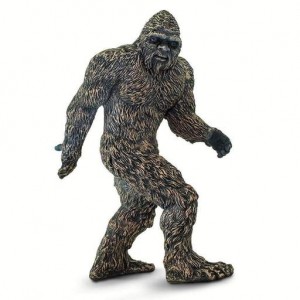



Safara Ltd, in consultations with me, released their Cryptozoology Toob in 2013 (see #10 here). At the end of 2019, with an eye on the 2020 market, Safari Ltd produced the “Mythical Realms” collection of Bigfoot, Yeti, Mothman, and Werewolf (Dogman).


Creaturereplica’s Horrorhounds and cryptids have been appearing all decade. Their Mothman is memorable, and their 2020 replicas were too.

Darren Naish, Ph. D., a British vertebrate palaeontologist and author, writing on Twitter on December 27, 2020, bemoaned that “once we get beyond Bigfoot, Mothman and such….you’d think that a good range of cryptid figures would be a huge hit. I really want some quality sea monster figures!”

Part of Naish’s #toyanimals collection of whales.
Then Naish adds, “If anyone relevant to toy manufacture is reading this, Loren and I could work as consultants. ![]() ”
”
10. Monumental Cryptozoology Deaths of 2020






=============================
2020 International Cryptozoology Museum News

Like museums everywhere, whether cryptozoology or hominology institutions, the International Cryptozoology Museum was forced to close from the late winter through the early summer of 2020, due to the quarantine-mandated coronavirus precautions. When we reopened in June, we faced a different world. Although we had existed for 17 years by being thrifty and never going into debt, if we wanted to continue to exist, we obtained small grants, applied for PPP funds, and secured federal government emergency disaster loans. Our revenue, tied to the Maine tourist business, crashed by 90%.
The problem was nationwide and we saw businesses all around us vanish. Indeed, at Thompson’s Point, we had shared Brick North with a small cafe that opened when we did in 2016, and then it closed. It was replaced by another small eating establishment. Because of COVID-19, that one closed in the Spring of 2020. The landlords then revised their plan for the giant building in which our Museum had been built. A way forward involved an offer for us to take over the former restaurant space.
We wanted to take over the extra square footage and we did. This seemed a dangerous but exciting decision, but the ICM needed more space, more room to be enhanced, and so we expanded in the middle of a pandemic. We trusted in our patrons and the future. (Please support us and donate to our survival here; scroll to find the donation levels.)

What this involved was the re-orienting of the Museum to face south, having our front door open on the parking lot (as with other tenants out front), instead of the alley, and the re-branding our Museum.
The giftstore was moved, our new vintage non-alcoholic tiki bar became our new admission desk, and displays on Thylacines, Okapis, Coelacanths, Dodos, Merbeings, Stellar’s Sea Cows, Menehunes, Kon-Tiki, and more were centralized.


The late Chris Orrick, cryptozoological collector, visiting the Brevard Zoo in Melbourne, Florida.



We had acquired the Chris Orrick collection, and the “Sasquatch Revealed” exhibition of Christopher Murphy’s had moved to the Museum.







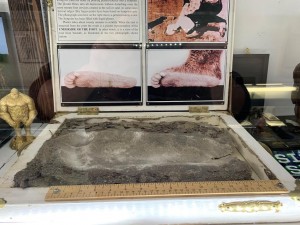
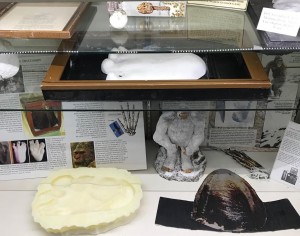
We needed room, and it was therefore immediately possible (before we re-opened) to install a great CryptoTiki opening and “Sasquatch Revealed 2020″ venue.

As 2020 rushed to an end, the media began discussing cryptozoology and the International Cryptozoology Museum again, as shown in the following examples:
Newsweek, November 19, 2020, “The World’s Weirdest Museums You Didn’t Know Exist.”

Loren Coleman and Wessie (Boston Globe photo)

Let’s see what happens in 2021.

Visit us at the International Cryptozoology Museum
and support our nonprofit mission via the CryptoStore.
Donate here. Thank you.
BTW, a version of the ICM was inked by Richard Corben (who passed away in 2020) via Swamp Thing (#7, 2004):


We won’t forget 2020 very quickly.

Credit to various cartoon comments throughout to Ted Bastien.
Follow CryptoZooNews
Not Found
The resource could not be found.